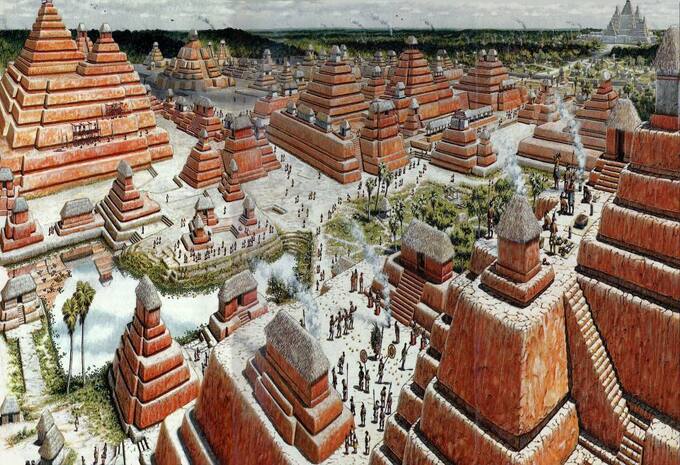Contacts
Nuria Sanz (n.sanz@unesco.org)
In November 2002 the Guatemalan authorities sent an updated tentative list of 16 sites eligible for nomination process for UNESCO World Heritage status. The relevance of Mayan sites, the potential for improving the representation of Mayan sites on the World Heritage list, and the linking of some proposals with pre-existing sites became clear. A mission for Preparatory Assistance for the nomination process of ‘La Cuenca Mirador’ thus took place from 23-30 May 2004.
Among these proposals, four define nomination hypotheses including an important number of archaeological sites encompassing five principle areas which extend the length and width of the Petén region. These areas are almost exclusively bound within the Maya Biosphere reserve and are defined as follows: la Cuenca Mirador, el Maya Cultural Triangle la Cuenca de los Ríos, el Corazón del Área Maya and the Naj Tunich Cave.
Each of these units unites a grouping of great Mayan archaeological sites with some being classified with the intention of nomination as mixed sites to take into account the surrounding natural context. The process was started by placing each of these areas on a map of Petén and it was realized that the majority was situated in the North of the region, thus representing in one area the totality of the representations of Mayan culture in all of its guises, thus having repercussions nationally and throughout other zones of Central America.
A preliminary mission was thus carried out in May 2004, the Principal objective of this mission being to collaborate with the Government of Guatemala to further the nomination process of the El Mirador site and explore potential links with other sites on the tentative list.
The World Heritage Centre has proposed to the Guatemalan government to consider the possibility of prioritizing actions in these areas and at the same time to look for possible connections and/or possibilities of the extension of other properties that are already inscribed. It is thus necessary to search for a proposal for the planning of preparatory assistance on a pertinent regional scale to then promote an integral reading for the future of Mayan World Heritage in Guatemala and by extension, throughout Central America.
The mission focused their attention on the Cuenca/Area Mirador, the mission exploring in great detail the natural and cultural potential of the site. The site presents exceptional natural and cultural characteristics. The site was at the heart of the development of Mesoamerica during the pre-classic and classic periods corresponding to the development of many social practices and the emergence of ruling elite in Maya society
Partners
